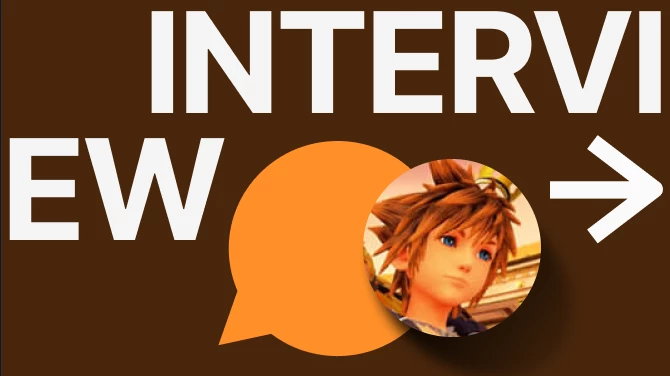This article is designed as a step-by-step guide on how to make your own patches between Eating Animations and Sounds and any mod that adds or modifies food.
It is specifically designed for versions of EAS later than V1.9.4. Earlier versions require a completely different approach.
This guide is designed to help you make your own patches to enable eating animations to play on new food items added by mods that do not use vanilla models. If you want to add animations to foods that use vanilla models, you can use the much easier KID method explained on the main EAS mod page.
Ok, so how do you add animations to mod-added food items ?
First of all, you will need two tools :
- SSEEdit (you can also use the Creation Kit but SSEEdit is much more convenient for the kind of plugin we are going to make)
- NifSkope
We are going to go through the process of creating an eating animation for a single food item. Once you have mastered that skill, making a patch for an entire mod is just a process of repeating the same thing for every food item it contains.
Step 1: choose your food item
Open the mod you want to make a patch for in SSEEdit. Under the “ingestible” tag, find the food item you want to make an animation for.
For your first food item, choose something simple. Ideally something that is comprised of a single 3D model and that looks and functions similarly to an existing vanilla food item.
Once you have chosen your food item, write down its ref ID and its mesh path somewhere.
You can then close SSEEdit for the time being.
I will be referring to your chosen food item as the modded food from now on.
Step 2: identify your base animation
This is a pretty important step. If you get this one wrong, you will probably need to restart from scratch.
Find the vanilla item that has the most appropriate animation for your new food item. This can be really easy (if you make an animation for cereal bread, use the bread animation) or really tricky (what animation do you choose for a hot dog) depending on how good a match you can find within the vanilla foods.
Remember that you need to take both animation and sound into account, as the sound effects are hardcoded within the animation. So if you want to animate a soft food, avoid using a crunchy one as a base, the result may sound really weird.
If you know how to animate, you can even make your own animations as a base, but this is not something I will cover here as it requires very specific knowledge and tools and a lot of time.
If you already know how to animate, one thing you need to learn is that the activation/deactivation of food meshes and sounds are triggered by annotations. So you need to be familiar with HKanno. You can check how these are implemented by reading the annotations in one of Eating Animations and Sounds original animations.
Ok, now that you have chosen your reference animation, stick with it to the end. Never change references during the process of working on a given food item unless you know exactly what you are doing.
I will be referring to the vanilla food item corresponding that animation as the reference food from now on.
Step 3: create your mesh(es)
You will now need to create a food mesh for your new food. This is distinct from the mesh that is used in-game or in the menus and is the one you will see your
character eat during the animation.
The reason you cannot just reuse the original mesh is because an animation mesh needs a hand position reference and must not have a collision box.
To create that mesh:
- Open the file system for the Eating Animations and Sounds mod;
- Go under meshes/TaberuMono;
- Find the mesh called XXXRing.nif where XXX is the name of the reference food. If your reference animation requires several meshes (a bottle and cork for example), find all the meshes you need;
- If the reference food has a specific table animation, also find the meshes called Plate_XXX.nif and PlateBS_XXX.nif or Bowl_XXX.nif and BowlBS_XXX.nif (depending if this is something you eat on a plate or in a bowl) in the "Tableware" folder;
- Create a new mod, this will be your patch;
- In this mod’s files create the meshes/TaberuMono path;
- Copy the reference food meshes from the Eating Animations and Sounds file system into your mod’s;
- Rename these meshes by replacing the reference food’s name with that of the food you want to create an animation for;
If you have several meshes, you will need to repeat the following steps for each one:
- Open your renamed mesh in NIFSkope;
- Find the original mesh for the modded food (you wrote down its mesh path in step 1);
- Open that mesh in NIFSkope and copy the part of the base mesh corresponding to the 3D object (do not copy the collision box);
- Paste that object into your renamed NIF file;
- You should now have two objects on your screen, the reference food mesh and the modded food mesh;
- Now comes the finicky part: you need to use the “transform” function on the modded food to align it as best you can with the reference food. This may take a while and you may need to scale the modded food’s size in order to get a good result;
- Once the alignment is good, delete the 3D model of the reference food, so the only remaining model is the modded food;
- Save that mesh.
You now need to create a plugin in SSEEdit that can trigger the appropriate animation when the modded food is consumed.
In order to do this:
- OpenSSEEdit and load Eating Animations and Sounds and the mod containing the record for the modded food;
- Open that mod and select the record for the modded food under “ingestible”;
- Right click and select “Copy as overwrite into”, then select <new file>.esp (the one with the ESL flag) and give that new plugin a name (this will be your patch plugin);
- Now open the EAS plugin (TaberuAnimation.esp)
- Under Ingestible, find the record called aaaDummy_Cabbage. If you have a multi-mesh food, there should be as many records as there are meshes. Use the “Copy as new record into” function, name the new record by replacing "cabbage" with the name of the modded food then save it in your patch plugin. Then, within that new record, change the "FULL - Name" and "MODL - Model File Name" records by replacing "cabbage" with the name of the modded food;
- In the EAS plugin, under Animated Object, find the record called aaAO_XXX where XXX is the name of the reference food. Use the “Copy as new record into” function, name the new record by replacing "XXX" with the name of the modded food then save it in your patch plugin. Then, within that new record, change the "MODL - Model File Name" records by replacing "XXX" with the name of the modded food;
- If you food item has table animations, you need to do the same thing with aaAOt_Plate_XXX and aaAOt_Plate_XXX or aaAOt_Bowl_XXX and aaAOt_Bowl_XXX;
- In the EAS plugin, under Magic Effect, find the record called aaaXXX_Animation_ME where XXX is the name of the reference food. Use the “Copy as new record into” function, name the new record by replacing "XXX" with the name of the modded food then save it in your patch plugin. Then, within that new record, change the "FULL - Name"" records by replacing "XXX" with the name of the modded food. Then comes the tricky part : in the "scripts" area, right click on the empty field next to "properties (sorted) and select "Add". In the new property's name field, write "EasDummyItem", change its type to "Object" and finally, under the newly created FormID field, select the aaaDummy_YYY record you created earlier.
- Once this is set up, you are almost done, just select the food record for the modded food in your patch plugin and under Effects, add a new field. Change that field's "Base Effect" to aaaXXXAnimation_ME and set its duration to 10.
- Save your plugin;
- Close SSEEdiit;
- Activate your plugin;
Step 5: setup the ANIO file
- Create a new text file, call it XXX_ANIO.ini where XXX is the name of your patch
- In that text file, add the following block :
[ANIO|aaaDummy_YYY]
aaAO_XXX|aaAO_YYY
- Where XXX is the reference food and YYY is the modded food.
- Save your ANIO file
Step 6: testing
Now for the sometimes tedious testing phase:
- Start a game of Skyrim with your plugin active;
- Use console command "player.additem XXX 1" whhere XXX is the ref ID for the modded food (the one you were supposed to write down in step 1). This should add that food item to your inventory;
- Eat the food;
- The animation should trigger;
- Depending on how well you aligned the meshes in step 3, this can look more or less convincing. Don’t worry, if you have bad alignment, you just need to quit the game, reopen you mesh and adjust the 3D object's position a little. Then restart the game and check if it looks better. This can be a little long if you don’t have a good feeling of your mesh’s position but you’ll get it right eventually;
Once it looks right, congratulations, you have created a new eating animation!
Now you just need to redo all of the above for every single food item in your mod and you will have a complete patch.
The only difference is that you can now add to your existing plugin and ANIO file instead of creating new ones.
Enjoy and have fun!
And don't hesitate to ask questions if this walkthrough is somehow unclear. I would be happy to help!
Especially since that means more people will be able to tacle some of those 100+ food item mods that still need patching (I am afraid my whole lifetime may be insufficient on my own).










1 comment
I've been trying to follow it but it is not working :/
I think it is regarding the ANIO file and the patch file that I created for the modded food.
I guess that I need to place both files in the root of the new mod created where the new meshes/TaberuMono for the custom food is, right?